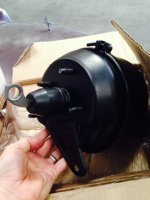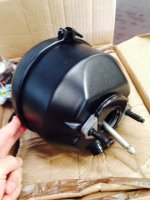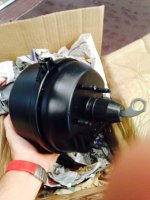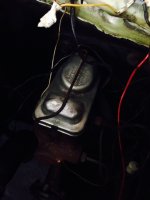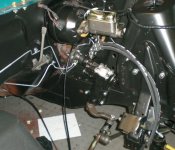It is highly unlikely to be original as a manual and power are different units. Unless someone cobbled up a rod to match to a power MC, I guess it "could" be done, never looked into it.
I'm not familiar with the marking unique to a OEM, and have never seen a date code on one. But maybe others can clarify.
In reality, if it is original and its 46 years old its probably due for replacement. No sense going thru all the hassle of swapping it out and bleeding the brakes just to have it go bad and need replacing later. If it fits (big if) best to pull the plunger out of the bore (requires snap ring pliers) and check the bore. Rebuild kits are inexpensive, but if any scoring or pitting or rust is evident in the bore, replace the unit.
They can be rebuilt but its usually far more expensive to have one redone as to buying a correct remanufactured unit. (here is stupidly expensive, I was quoted $350 to re-sleeve one... went for a remanufactured unit instead)
As for tools;
- brake line flare wrenches for master cylinder and bleeders
- open end wrenches
- sockets and extensions (long extension help under the dash fitting the unit to the firewall)
- small funnel and fender/apron protection to avoid drips on your paint
Plenty of sites on the web on bleeding brakes, some prefer gravity method, some pedal pressure, some vacuum assisted.
I like the "pedal" method and this litte tool makes the job a lot easier. Keeps the distribution block switch in place when beeding.
use a centering pin on the distribution block -
http://www.npdlink.com/store/produc...ntial_valve_switch_lock_tool-178818-2981.html
On that note, if you have the rest out you should check the block and ensure the switch is working during the refit.
Really all pretty standard weekend mechanic stuff.

